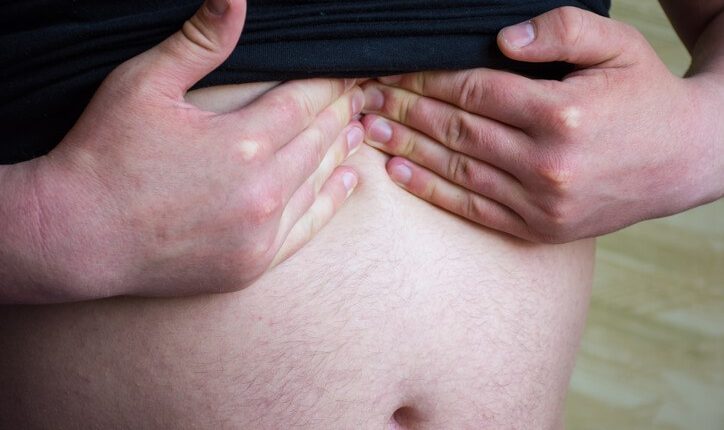
Hiatal hernia: what are the symptoms and how to treat it
If you experience heartburn, gastroesophageal reflux and difficulty swallowing food, you may be experiencing symptoms related to a hiatal hernia
A hiatal hernia involves the migration of part of the stomach into the chest and is caused by a relaxation of the walls of the hiatus, which is the space in the diaphragm that allows the passage of the oesophagus.
Hiatal hernia is very common in the general population and is found in about 15% of Italians.
It may be asymptomatic or be associated with symptoms such as those mentioned above.
Hiatal hernia: gliding, paraesophageal and mixed
When talking about hiatal hernia, it is important to distinguish according to the characteristics with which it manifests itself.
The form of hiatal hernia that develops in most cases is the gliding form, which involves the migration of a part of the stomach into the thorax based on pressure from the abdomen.
This type of hernia is common in patients with abdominal obesity and symptoms occur particularly when the patient is supine decubitus.
Para-oesophageal hernia, on the other hand, involves the passage of the upper part of the stomach into the thoracic cavity, next to the oesophagus. Finally, mixed hernia is an uncommon disorder in which the condition of both a sliding hernia and a paraesophageal hernia occur at the same time.
What are the symptoms of hiatal hernia?
A hiatal hernia may occur without being accompanied by a specific symptomatology.
If symptomatic, the typical manifestations involve symptoms of gastro-oesophageal reflux disease, a disorder that is rather easily recognised because it causes burning, regurgitation and pain in the area behind the sternum due to the rising stomach acid from the stomach to the oesophagus.
Other symptoms of hiatal hernia are heart palpitations after meals, halitosis, nausea and dysphagia (difficulty swallowing food).
Hiatal hernia: gastroenterological examination and tests for diagnosis
When the symptomatology is mild, it can be resolved with a course of therapy set by the treating physician or a gastroenterologist.
If the symptomatology is not controlled by the drugs or the symptoms are more severe (slimming, vomiting, acute pain in the upper abdomen), it is advisable to consult the gastroenterologist as soon as possible, who will indicate the necessary in-depth examinations, such as oesophagogastroduodenoscopy and X-rays of the oesophagus, and will subject the patient to an appropriate course of treatment.
Familiarity or trauma: risk factors for hiatal hernia
As we have said, hiatal hernia is caused by loosening of the hiatus: a condition that can be caused by congenital factors but also by advancing age, a state of overweight or obesity, or pregnancy.
Other risk factors are trauma in the abdominal area, very strong pressure on the abdominal muscles resulting from evacuation, episodes of coughing and vomiting, or even certain physical activities, such as using arm weights at the gym.
Hiatal hernia: what to eat and what to avoid?
When it is asymptomatic, hiatal hernia does not need to be treated, while in the case of mild symptoms attributable to gastro-oesophageal reflux, it is necessary to change one’s diet first.
Foods that can worsen symptoms are spicy, fried and high in fat, such as sausages, some cheeses, sauces and butter.
Tomatoes, citrus fruits, mint, chocolate, coffee, tea and alcohol should be avoided.
Meals should be small and frequent, in the evening one should eat dinner at a time away from bedtime and avoid lying down in the hour after the meal (if watching television, it is better to do so sitting on a chair).
In addition, sufferers of hiatal hernia should stop smoking and, if overweight or obese, start a weight-loss programme with the support of a nutritionist, as both conditions cause the problem.
How is a hiatal hernia treated?
When the symptoms related to hiatal hernia are more severe, drug therapy may be necessary.
This may include over-the-counter drugs such as antacids and alginates or prescription drugs such as proton pump inhibitors and H2 antagonists.
In more severe cases, the specialist may consider surgical treatment, which is performed under general anaesthesia and laparoscopy, i.e. through small holes in the abdomen that leave almost invisible scars and allow the patient to recover more quickly.
Laparoscopic hiatal hernia treatment usually resolves in about three days of hospital stay and 3-6 weeks of convalescence.
Read Also:
Emergency Live Even More…Live: Download The New Free App Of Your Newspaper For IOS And Android
What It Is And How To Recognise Abdominal Diastasis
Chronic Pain And Psychotherapy: The ACT Model Is Most Effective
Hiatal Hernia: What It Is And How To Diagnose It
Percutaneous Discectomy For Herniated Discs
What Is That Swelling? Everything You Need To Know About Inguinal Hernia
Symptoms And Causes Of Umbilical Hernia Pain



